| Freaks in Afrique | ||||
| meanderings in Moçambique, South Africa & Madagascar | ||||
| The news from St. Lucia –a South African coastal town near the Moçambique border– on this lovely, moon-illuminated Monday eve: a male Hippopotamus amphibius is across the street from our hostel, eating grass. But I'm getting ahead of myself. |
||||
| Thursday, May 20, 2010: Departure | ||||
|
Fela2 "Noise For Vendor Mouth" by Fela Kuti |
||||
|
Worm, Bee & Bug (from right to left) board a non-stop, 15 hour flight from New York City and touch down on African soil in Johannesburg (henceforth "Joburg") early Friday morning. Our first order of business is to get out of Joburg, and we made for the Joburg intercity bus station, which was always described to me during my previous stay (1996) as perhaps the most dangerous spot in town. So, with electronics and passports securely stowed in our packs, we enter the fray. Our intended destination is the North-Eastern province of KwaZulu-Natal. Looking on a map, we supposed that we could get a bus to the town of Mtubatuba, a couple of hours north of Durban on the main highway. From there to St Lucia is a mere 25 km, so perhaps we can make it all the way by nightfall. At the bus station, we learn that there's only one intercity bus per day that passes anywhere near Mtubatuba, and it left 2 hours earlier. Plan B: minivan. So we head to the minivan (henceforth, "kombi") station, entering a bewildering world of transit to every corner of the country, and commerce of all forms imaginable. When we find the section with kombis bound for Mtubatuba, one van is just filling up, and there is clearly no room for the three of us plus backpacks; we get seats on the next kombi. Departure time: when it's full. So we wait..lounging on seats by the open, sliding kombi door, as an endless stream of sellers pass by, hawking literally everything you can think of: fruit, candy, cellphones, shaving kits, clothing, 'official' South African team jerseys, toys , jewelry, cold drinks, saran-wrapped road trip lunches, every possible phone charger type ever made, watches, cologne, nail clippers, 'airtime' (a one-syllable word referring to prepaid phone cards) and a 32 Gb usb thumb drive. Want anything not on the above list? Just ask any seller and it will appear within 5 minutes. The sun passes overhead, Our kombi slowly fills up. Police squads armed with automatic weapons periodically pass by. We try unsuccessfully to sleep. The endless stream of sellers flows without pause. After about 3 hours our bus is full and we are suddenly on our way. Any world travelers reading this will understand what the next 8 hours are like: not enough room between seats to bring knees together, ass getting numb from the springs pushing through the bench upholstery, trying to find the passing town names on the map, falling asleep to the sounds of a foreign tongue, actually having dreams for 20 seconds at a time before being awakened either by neck snapping back or pothole being hit, reading until the sun goes down, poverty-stricken communities, stunning landscapes, dirt paths leading tantalizingly to unmarked towns, Finally, arrival! But by now, all the kombis to St. Lucia have stopped running for the night, and Mtubatuba is not looking like the most inviting place after dark: quiet streets, broken glass, empty stares from people sitting on the curb smoking tobacco. And then, as if out of one of our 20 second dreams, Kwaza* appears and asks if we need a ride. He brings us right to the front door of this fantastic hostel in St. Lucia, and we utterly pass out. *Kwaza is the name of a super cool local who appeared out of the ether to give us that ride. |
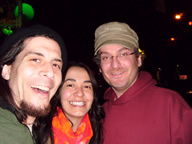 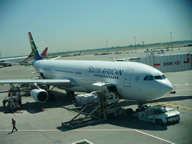 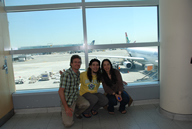 |
|||
| Saturday, May 22: Hippos | ||||
|
Carlos E Zaida "A Wasanti" by Carlos and Zaida Chongo |
||||
We wake up not knowing if we'd slept for 14 hours or 14 days, and wander across the street to find an abundance of avocados, papayas, pineapples and passion fruit ('Mburucuya' in the original Guarani mother tongue). And there is much rejoicing. St. Lucia is a beach town in the iSimilango World Heritage Site, situated on the largest estuary in Africa, and home to an absolutely mind boggling array of story-book creatures. Today we walked down to the beach to see the Hippos. I first spotted one as a huge splash at the mouth of the estuary and thought: 'whale!' Awesome in their size, but gentle in their herbivory…not! These ginormous beasts can run 45km an hour at least (that's faster than you) and they apparently can take a particular disliking to Homo sapiens (I can't imagine why). So one is advised to keep a respectful distance. Back at the hostel, drinking South African wine and chatting with Jabo (the hostel manager), we see a white gecko on the wall. We're all excited, and Bee mentions that they are considered good luck. What follows is a lull in the conversation, and Jabo explains that the white gecko is not at all a sign of good luck. According to Zulu tradition (which Jabo affirms is absolutely true) if a white gecko is in the room the man's performance…umm…suffers: "If the gecko's tail is up, the man is not." |
||||
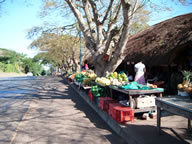
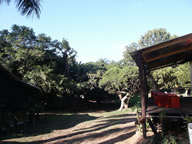
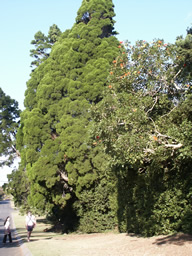
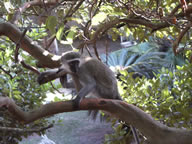
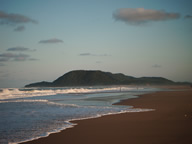
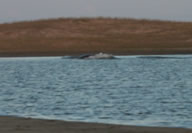
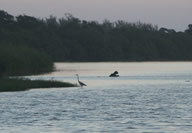
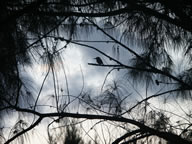
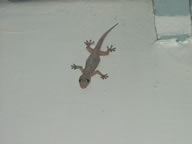 |
||||
| Sunday, May 23: The Bush | ||||
We get a slightly earlier start today, and walk up the road to the game reserve. Although one must pay about $5 per person in a car to enter, it's free on foot, and we take the self-guided nature walk: a mowed, circular 5km path through the bush. Absolutely mind blowing how much megafauna (mammal and insect) we encountered. I'll just let the pictures speak for themselves… |
||||
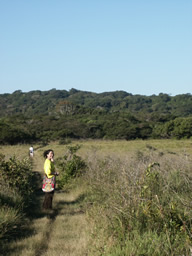
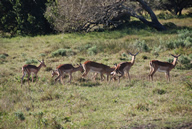
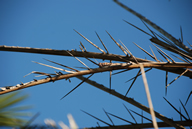
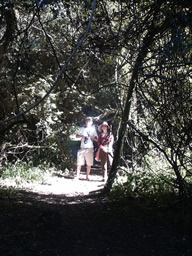
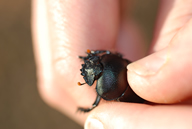
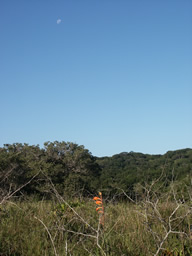
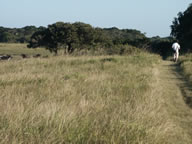
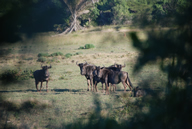
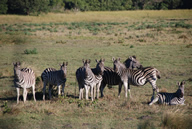
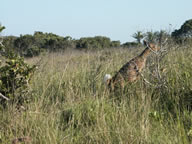
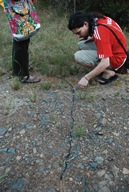 |
||||
|
Then, as if this was not enough for one day, a park employee & her partner picked us up as we are walking back to town, and they turn around and take us deeper into the park. Here are the photos from the late afternoon: | ||||
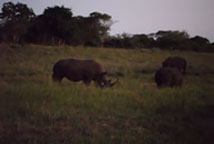
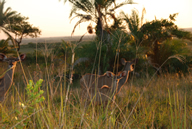
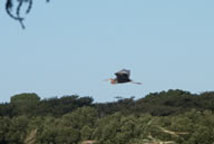
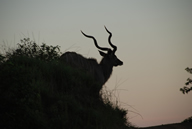
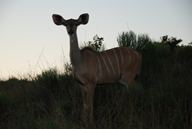
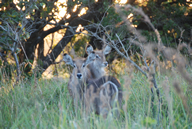
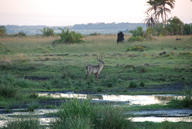
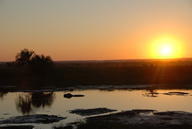
| ||||
| Monday, May 24: The Estuary | ||||
|
Mukavele "Unknown track" by Mukavele |
||||
Yesterday down by the estuary (when we saw the hippos) we met a local family and asked them whether the crocodiles were really that dangerous. We got our answer when the wife yelled something in Afrikaans (the language spoken by the Dutch immigrants) at her husband, and he stepped several paces back from the shore (I'm assuming "Do you want your children to see you dismembered by a crocodile?"). But there were no crocodiles to be seen that day, so the plan for today was to see crocodiles. We walked back down to the estuary, this time via a self guided coastal forest trail. Then down at the estuary we saw lots of crocs sun bathing on the shore. The pictures from the trail and the estuary are below. |
||||
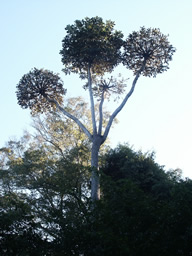
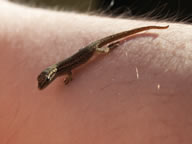
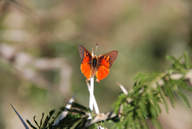
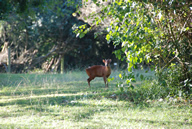
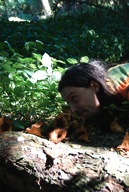
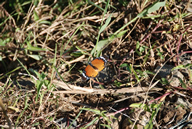
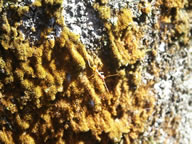
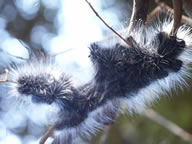
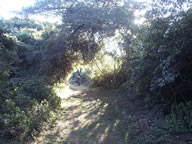
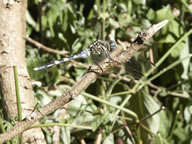
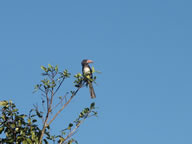
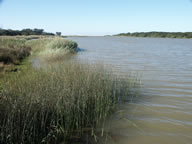
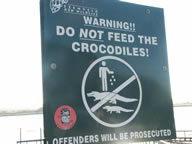 |
Totally cool to see crocodiles, but you will be shocked, I'm sure, to hear that the experience that got me the most...well...excited was witnessing the complete arc of a dipteran love affair: encounter, intensity, passion and the inevitable break up. |
|||
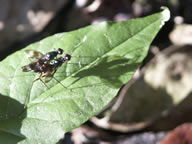
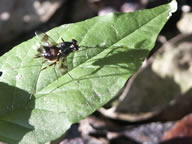
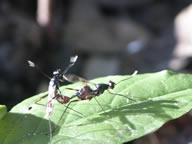
|
||||
|
The sun went down on another amazing St Lucia day, and, again, our cup overfloweth: a hippo across the road eating grass. | ||||
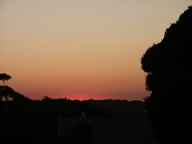
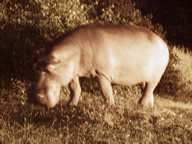 |
||||
| Tuesday, May 25: Cape Vidal (posted June 18, 2010) | ||||
Our last excursion in St. Lucia was to Cape Vidal, a nice snorkeling spot and a possible location for the hemichordates that Worm is seeking. There's no Kombi to Cape Vidal, so we rented a car, grabbed our snorkeling gear and a worm shovel, and hit the road Beautiful location with some nice tide pools and good invertebrate diversity, but alas, no hemichordates to be found. Cape Vidal is home to some vervet monkeys that are quite accustomed to the ways of the casual tourist. The small cute ones distract you while others enter your vehicle and pilfer your food. We stood vigilant guard; others nearby, not recognizing the assembling gangs around them, lost their chips & chocolate out of their open hatchback. We also saw some Samango monkeys (Cercopithecus mitis erythrarchus) there, which are critically endangered. On the way back to St. Lucia we passed again through the game reserve, and got some more mammalian (and insectan) close encounters. |
||||
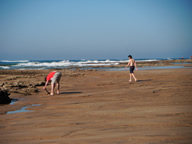
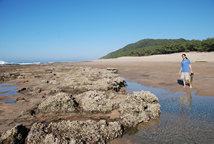
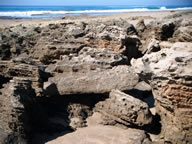
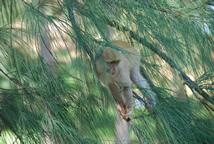
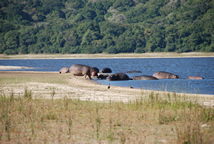
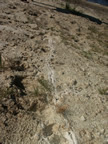
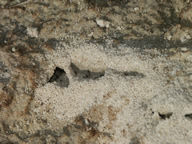
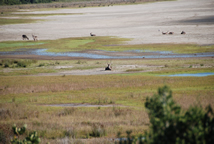
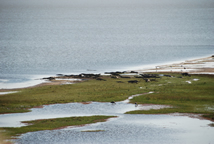
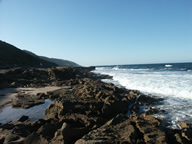
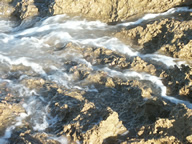
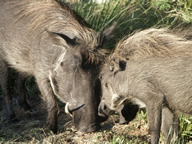
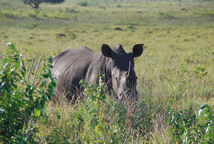 |
||||
| May 26, 2010: No Getting Over You (posted June 18, 2010) | ||||
After four stunning days in St. Lucia, it was time to move along. We boarded an early morning Kombi back to Mtubatuba, where we all caught the next northbound departure to Kosi Bay at the South Africa-Moçambique border. Worm was off to dive Sondwana Bay, about 100km south of the border, so we hugged goodbye, and Bee & I continued por El Norte. Boarding the Kombi transport from the town of Kosi Bay to the border crossing, I tried out my first words of Portugese to the other passengers: "Tudo bem?" With a flash of eyebrows, and the requisite "Tudo, tudo!" response, it felt nice to be about to visit my third former Portugese colony, on as many continents. At the border crossing, our vanload of black South Africans & Moçambiquenhos plus us was joined by a handful of white South Africans on holiday, driving to the beach resort town of Ponta d'Ouro, just north of the border. Our plan was to head straight to Maputo, the capitol, 80km north. Our guidebook was silent on transit options, but we were confident there would be plenty of Kombis plying that route; judging by South African transit times, should take about 90 minutes or so. So with newly-obtained visas in hand, we walked across the border expecting to find a typical border town, currency exchange, kombi terminal, roadside food. Instead, we saw a paved road (up which the South African tourists were driving) and nothing else. We spotted a few Mozambican workers sitting in the shade of a tree, so I walked up and asked how we could get transit to Maputo. They pointed to the left, down a sandy road, towards a Kombi sitting under a tree. So we slogged the 200 meters or so down that road (I actually took my sandals off in order to make any headway through the sand), negotiated a price in South African currency, and boarded the Kombi ("chapa" on this side of the border). After an hour or so, the van was full and we departed. I figured that the sandy road must just be a short border access road leading from the border to the paved road into Maputo. Incorrect. The sandy, bumpy road continued. We drove at about bicycle pace. The driver had some kind of MP3 player, but it only had three songs, which he endlessly repeated, except for the second song, which he would skip (he must've become sick of that particular one). Song 1, apparently entitled "There's no getting over you": If all the things I know right now There's no getting over If I could spin my world back round There's no getting over... Song 3 did not quite reach to that level of lyrical complexity, having only one repeated line floating above the (also singular) drum and bass rhythm: "You wanna make me choose." To pass the time, I tried to imagine a lyric that would have more tragic resonance with me, so I changed the words to "You wanna make me shoes!" Every bump caused the MP3 player to skip and return back to the beginning of Song 1, and there were so many bumps in the road that I started to actually look forward to Song 3 (and the first few seconds of Song 2). After 6 (!) hours of this, we finally arrived in Maputo. I never did find out what he would do if he got her back again. |
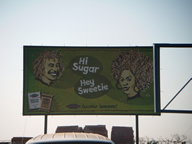
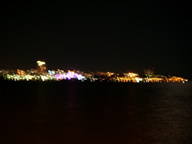 |
|||
| Later in May, 2010 - Maputo (posted June 18, 2010) | ||||
|
Bassopa "Bassopa" by Salimo Muhamad |
||||
Alright, it has finally become clear to me that if I am ever going to actually catch up to the present with this blog, I'm gonna need to free myself of the daily entry format. Thus my entries on Moçambique are gonna be a bit more fluid, which also seems appropriate for the pace of our travels here. Maputo is the capital of Moçambique, a country that gained independence from Portugal in the 70s, and survived a brutal civil war in subsequent years. The result is a fairly poor country with spotty infrastructure at best and an incredibly patient and resilient populace. The climate is tropical, with a very long coastline, high plant and animal diversity, and a wide range of habitats - from mountains to desert to coastal tropical forest. The lingua franca is Portugese, which was great for us, since we could communicate with almost anyone we met. But outside of Maputo, the language of choice among Moçambiquenhos is one of about a dozen local languages. Even in Maputo it's hard to understand locals talking to one another, because their Portugese, too, is peppered with indigenous words. Both Bee & I felt like Maputo was strangely reminiscent of Asunción, Paraguay, with its fading colonial structures, poorly-maintained roads, buses without shocks, ubiquitous street sellers of literally everything, cheap and cold beer, staggering array of luscious, inexpensive fruits, and absolute lack of any consideration for pedestrians. Also in common with Paraguay are the two major food staples: Maize and Cassava, both of which are actually native to the Americas. Thankfully not in common with Paraguay is the absolute ubiquity here of hot sauce (henceforth "Piri-Piri"). More on that later. So, preparing for our road trip north the next day, Bee made some "Mandio Shyryry" (fried mandioca with salt) in the hostel kitchen. And the only thing better than Mandio Shyryry is Mandio Shyryry with Piri-Piri, so we were fully ready for the trip. We set my alarm clock (previously known as my cel phone) for 6:30 am and got some much needed rest. |
||||
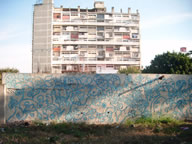
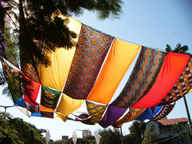
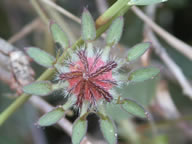
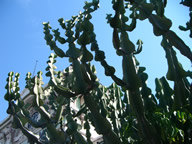
| ||||
| Banco Blanco (posted June 18, 2010) | ||||
|
Wazimbo "Monami" by Wazimbo |
||||
What is "Banco Blanco" you ask? Let me answer by giving you this first of many examples: we arrive at the intercity bus station to find out that there is a charge for our backpacks. Looking around we see that most of the other passengers also had large bags. But there was one major difference between us and all of these other passengers: we were the only foreign tourists. Banco Blanco. But transactions at the Banco Blanco are like any other transaction in Moçambique in one respect: everything is negotiable (especially if you speak Portugese). So we managed to get our so-called "baggage charge" down to 50 meticais (approx $1.40 each) and boarded our chapa for Inharrime, where we had arranged a pick-up from a dive operation/hotel/backpackers in a nearby coastal village called Závora. We soon found out that although the sandy track from the border to Maputo was particularly bad, the main highway running N-S through the whole country was no Autobahn. More on that later. Arriving in Iharrime, our arranged pickup was nowhere to be found. It may surprise you to hear that Moçambique is a far more intense cel phone land that the USA - the most extreme looks of shock that we received in our travels was when we told the air time sellers on the street that we have no cel phone. But if you happened to have no phone (or are out of air time) you can always make one-time calls from cell phone booths in the street. It comes out to about 10 cents per minute for cel-to-cel calls. This makes perfect sense, of course, and with the ridiculously inflated cost of making calls from pay phones in the US (if you can find a working one), this is something we clearly need back home. Waiting for our lift, I went across the street to check out the market while Bee drank a beer. My entry raised a bit of a stir from the lady sellers: in addition to what sounded like cat calls in a language I didn't understand, I got at least two proposals in Portugese. When I replied that my wife was outside, one responded "well, she's outside..." Ladies in Inharrime are apparently pretty forward. The diving in Závora was a trip: the 7 meter high seas made for a pretty hairy entry with substantial sloshing to-and-fro below, but the sea life was astonishing. Coral, butterfly fish, triggerfish, manta rays, an amazing diversity of seastars (including the largest star I've ever seen at about 1.5m diameter) and the reef was totally crawling with feather stars. I was diving alongside an amateur underwater photographer from NZ named Sanjeev, so I'll hopefully be able to include some of his pictures here eventually. Závora was a nice place to stay, but it was a bit too gringo vacation spot for our tastes. In fact, there was a direct bus leaving from there to the next backpacker/tourist destination up the coast: Tofo, home of the whale shark snorkeling safari and the yoga studio backpacker's hostel. We decided to save money and travel with the people, so we hitched back to the main road past villages, waving children and cassava fields, and caught the next chapa north to Inhambane. |
||||
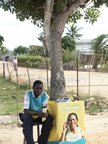
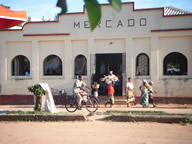
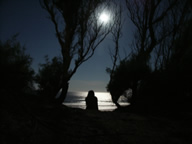
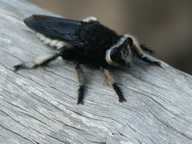
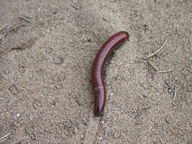
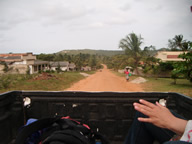
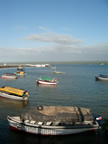
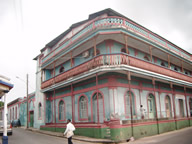
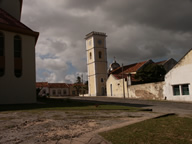
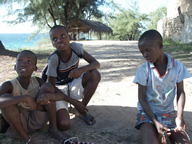
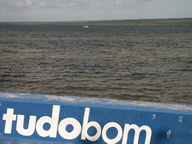
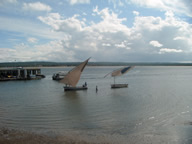
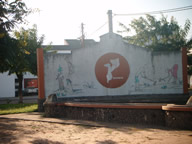
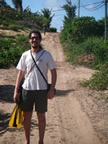
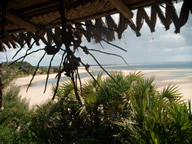
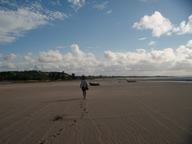
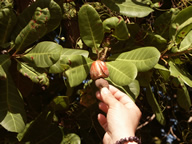
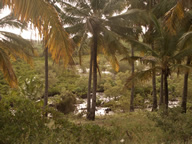
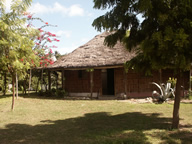
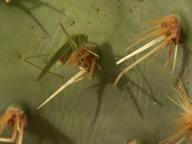
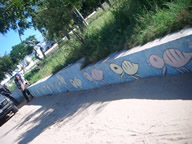
|
||||
| Down that dusty highway: Final thoughts on Moçambique (posted November 27, 2010) | ||||
|
Celina_Zogo "Celina Zogo" by Joachim Macuacua |
||||
In a desperate effort to try to bring a semblance of closure to this travelblog, Bee & I revisited some of our Moçambique and South Africa pictures & stories to fill in some of the glaring gaps. The highway in Moçambique is shockingly bad. I use the singular "highway" purposefully; there really is basically one main highway running N-S through the country. This is the road used for all north- and south-bound passenger and truck transport, and there are parts of it that are so badly pot-holed that everyone (except motorcyclists out for a thrill and pedestrians) use dirt paths running parallel to the highway. As it turns out, China has apparently struck a deal with the Moçambique government to fix all their roads at China's own costs, but with some kind of agreement to be able to move goods without tariffs or some such. We saw similar involvement of China in development projects (energy, etc.) all over southern Africa. So, while the US is sitting on our ass with respect to international development outreach (Hello? Millennium Development Goals?), China is forging forward, and in the process getting what appear to be significant post-cold-war economic footholds in developing countries. So, anyway, the slow roads caused us to scale back significantly on our ambitious plan to make it to the north of the country (there is, by all accounts, an absolutely incredible wildlife park along the Moçambique-Tanzania border that get very few visitors) and to swim in a rift lake. Instead, we decided to head for the mountainous Chimanimani region, and the regional capital of Chimoio. Pictures with stories embedded in captions, below. After that, and with only 3 days left before our planned rendez-vous with Jesse and Mike in South Africa, we needed to start South. At this point we are in the coastal town of Beira, and we show up at the chapa station before dawn for the direct bus to Maputo, have the requisite haggle with the driver over "baggage fees," and off we go. Someone stands up and the driver yells at him to sit down. Whoa, this driver's a jerk, and it's gonna be a long ride. About 2 hours later, a young woman in the back of the bus asks sheepishly if we can make a pee stop. This request is always acceded to, and the driver says "yeh, we'll stop right up ahead." He keeps going. The girl starts shifting uncomfortably, then even more sheepishly asks again. The driver says "yeh, we'll stop soon." She starts to cry. What ensues is a passenger uprising yelling at the driver to stop. This insurrection catches the driver totally off-guard and he immediately pulls over. The shift in the chapa balance-of-power in the aftermath of this event worked in our favor for convincing the driver to make two key stops for roadside specialties in towns we had marked on the map for the return trip south: 1) cashews in a town south of Inchope (Chiboma?); and 2) Piri-Piri in Nhacoongo, north of Inharrime. Thus well-equipped for the rest of our journey to South Africa and beyond, we returned to Maputo, went out to see some good local reggae with other World Cup travelers converging back on the Moçambique capitol -notably, Aya the Korean hippie, an Argentinian, a bunch of Slovenes and a Spanish guy who was stuck in Maputo for obscure visa reasons. The next morning, we woke early with pre-packed bags, and boarded the bus for Joburg. | ||||
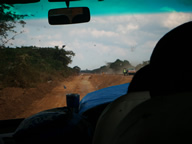
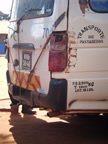
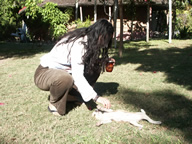
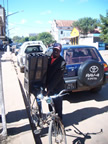
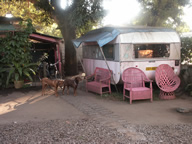
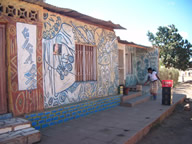
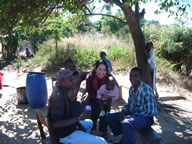
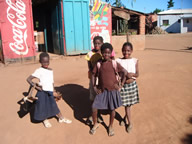
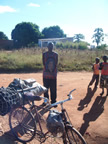
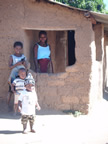
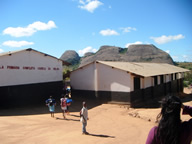
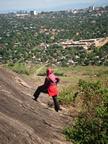
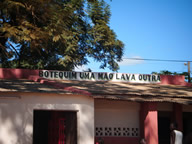
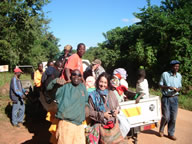
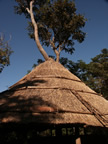
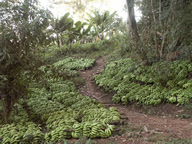
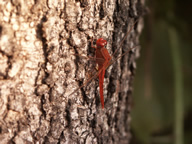
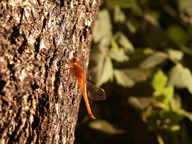
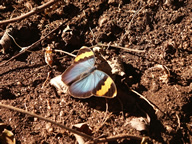
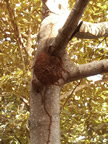
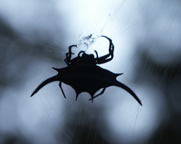
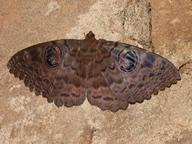
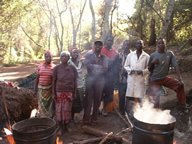
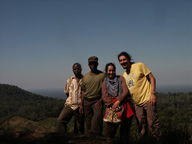
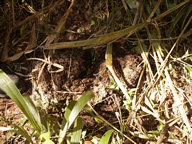
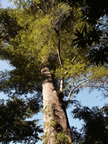
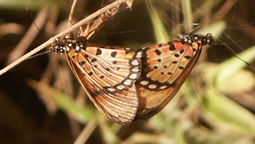
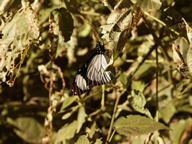
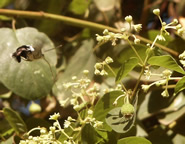
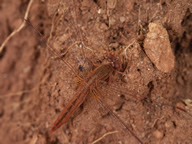
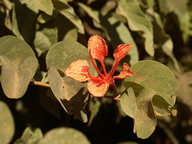
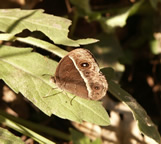
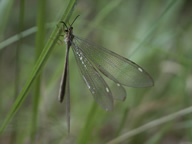
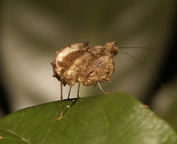
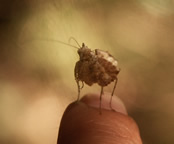
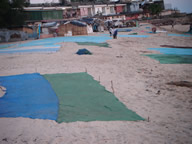
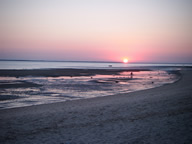
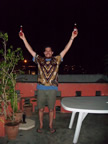
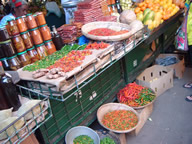
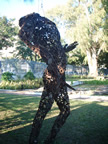
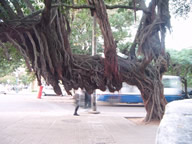
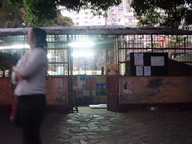
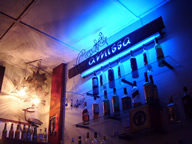
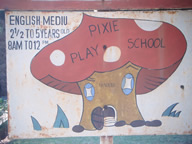
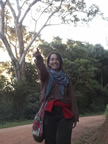
|
||||
| Mid-June 2010: O Jogo Bonito, Africa Style (posted July 2, 2010) | ||||
|
Jorge "Camisa 10 Da Gavea" by Jorge Ben |
||||
Even as we touched down in Joburg one month before the World Cup began, we could tell that South Africa was supremely psyched for soccer (henceforth, "football"). Literally 50% of the people we saw in Joburg were wearing South Africa national team (henceforth, "bafana bafana") colors. All throughout the trip in Moçambique, we encountered traveling football fans from all corners of the globe: we partied in Maputo with Argentinians, met an intrepid South Korean on the beaches of Vilankulo, took a bus with a gaggle of Germans, and toasted Slovenians to their upcoming encounter on the pitch with the yanks. Now, back in South Africa, World Cup madness is culminating in the ever-present drone of the vuvuzela, a veritable tower of babel of spoken languages (this in addition to the dozens already spoken here), and an intense national pride in graciously hosting the world in their lovely land. Meanwhile, the hostels' open arms came at a cost: rooms were up 4-fold in price from the previous month. Thus, our immediate goal was to head post haste overland on the 2 day journey to Cape Town, where we had arranged to rent a house for the month from an Entomologist colleague of mine. Our departure date from Joburg was June 11, the opening day, and we planned to stop to see the opening day's match between South Africa and Mexico in whatever town seemed inviting at about game time. We had met up with Jesse in Nelspruit and Mike at the hostel in Joburg, so our crack team was now nearly fully assembled. As it happened, game time occurred as we passed through the town of Klerksdorp, and since the Ranch Restaurant had a pack of partying locals out front, we headed in. Absolute, beautiful madness. Spontaneous singing, clapping, dancing, beer flowing freely. We were welcomed unquestioningly, and kindly offered milk crates as seats. When I asked about vegetarian meal options, the bartender told me she would make me beans if I went out and bought a can (I did). The first goal of the cup was an absolute beauty by Tshabalala (what a name!), and the bar exploded in delight. Khune made save after amazing save. The eventual 1-1 score was actually a triumph for S African football. It brought a tear to my eye when we were thanked so profusely by the locals for watching the game with them. And then we continued South. Due to the fact that I am now typing this entry in late June, and I am still way behind on Moçambique and other S Africa stories, I am going to skip a lot of details and finish this post with some random thoughts on the world cup here: *we have met almost nothing but friendly folks from all over the globe; May the beautiful game continue to shine on the mother continent! | ||||
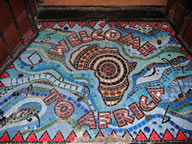
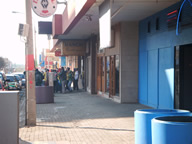
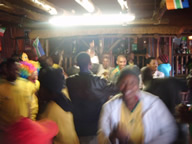
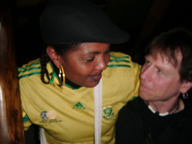
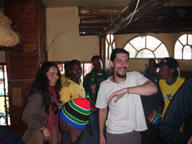
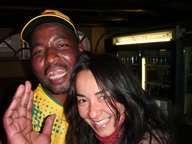
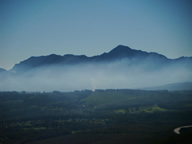
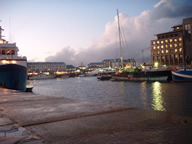
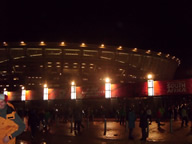
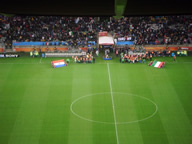
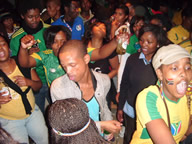
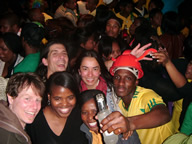
|
||||
| ...and also (posted November 28, 2010) | ||||
|
Xidiminguana_Nyandayeyo "Xidiminguana" by Nyandayeyo |
||||
|
The other major stories and photos gap remaining in this blog is from South Africa. Last I wrote (almost 5 months ago, yikes!), Germany was about to absolutely humiliate Argentina to make it to the semi-finals, only to completely fizzle in their next game against Spain, Uruguay was about to cheat in the final seconds of regulation against Ghana to deny Africa its first ever semi-final berth, leaving a continent staring in blank disbelief at televisions, Netherlands was about to defeat about as pathetic a Brasil side I've seen in a while, and then go on to avenge Africa in their match against Uruguay (who admittedly played spirited ball throughout, including in their semi-final loss to Netherlands; and Forlán absolutely deserved the Golden Ball award that he received). And, most tragically, Spain was about to beat Paraguay ignominiously in a game that Paraguay so clearly deserved to win (Valdes' goal just before halftime was absolutely not an offside for starters). Only second to Switzerland, Paraguay played the best football against Spain, who would, of course, go on to beat a disappointing Netherlands side in the finals. Other things happened in South Africa too. We climbed table mountain (which overlooks Cape Town), toured Robben Island, visited some amazing parks and seashores around the Cape region, drank a bunch of excellent local wine, checked out a Cheetah rehabilitation center and, for the coup-de-grace, hiked the deservedly famed Otter Trail along the garden coast, named for the elusive Cape Clawless Otter (Aonyx capensis) which we saw!! See below. | ||||
| Road Trip: Joburg to Cape Town | ||||
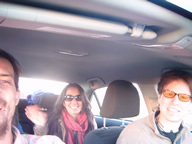
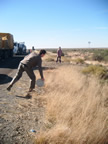
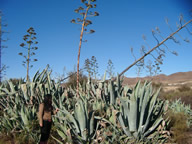
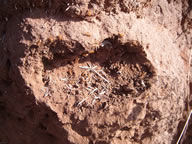
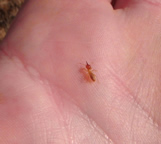

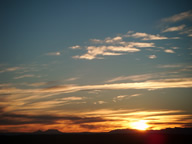
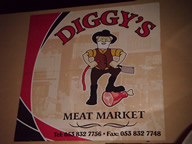
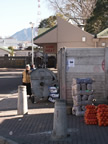
|
||||
| Somerset West (our home in the 'burbs) and environs | ||||
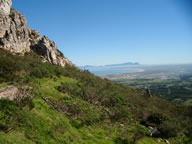

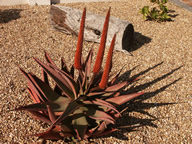
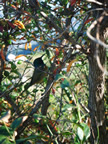
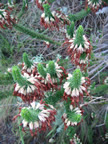
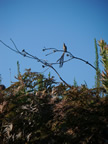
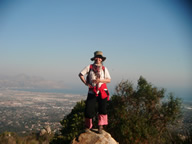
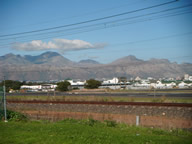
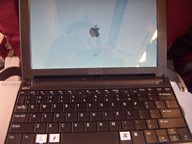
|
||||
| Stellenbosch: land of wines, ostriches and cheetahs | ||||
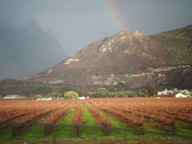
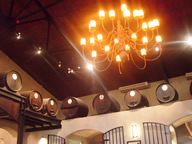
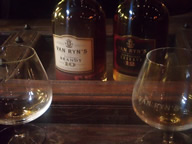
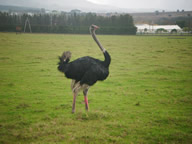
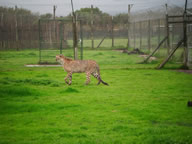
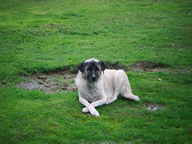
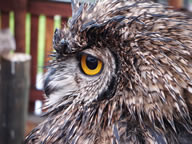
|
||||
| Betty's Bay and False Bay | ||||
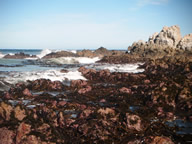
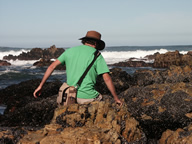
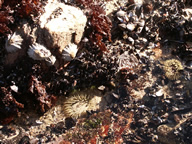
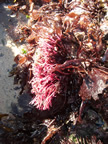
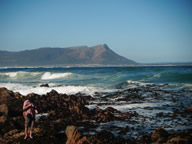
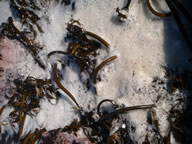
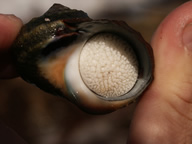
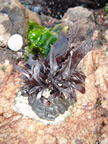
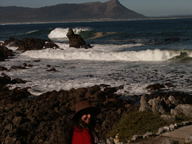
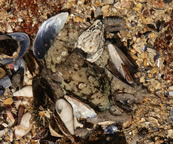
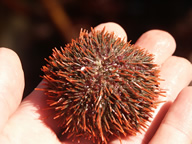
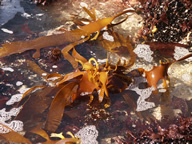
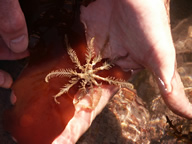

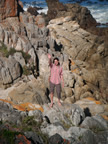
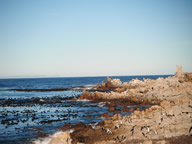
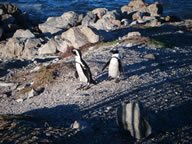
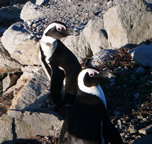
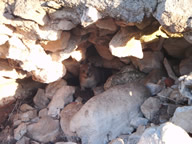
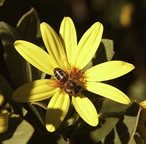
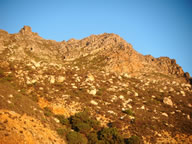

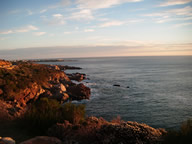

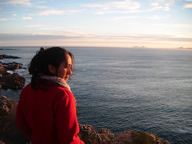
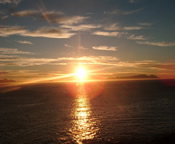
|
||||
| West Coast National Park | ||||
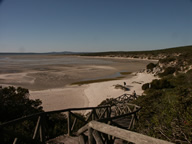
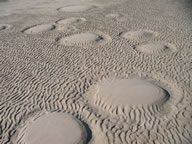
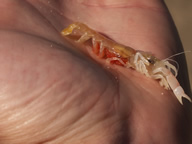
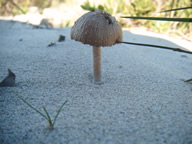
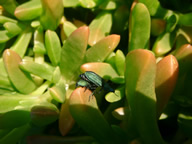
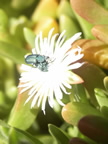
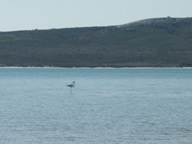
|
||||
| Kirstenbosch Botanical Gardens and climbing Table Mountain | ||||
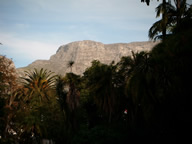
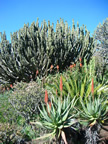
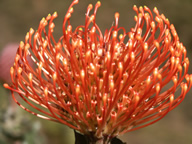
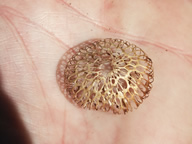
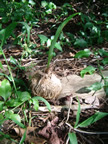
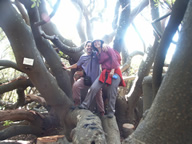
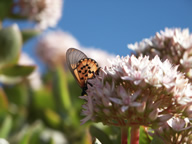
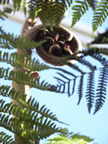
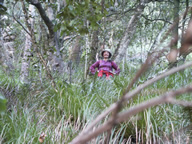

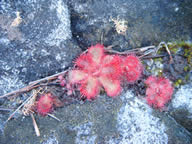
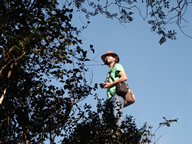
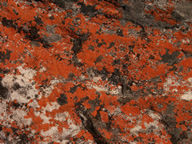
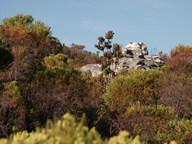
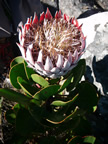
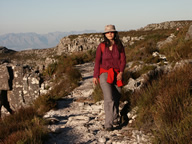
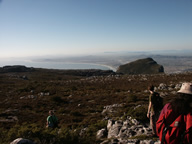
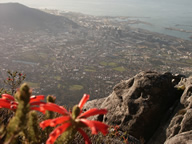
|
||||
| Robben Island | ||||
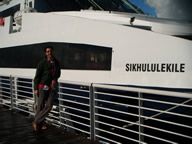
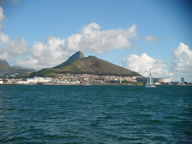
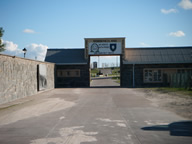
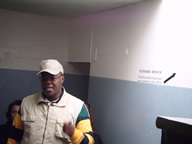
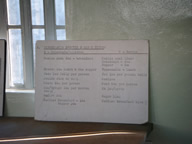
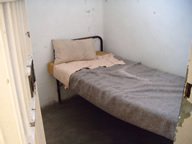
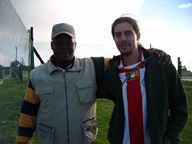
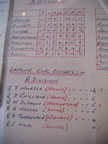
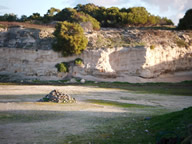
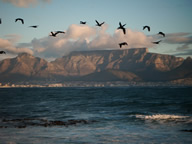
|
||||
| Cape of Good Hope | ||||
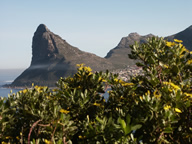
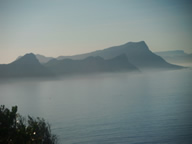
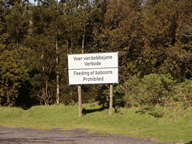
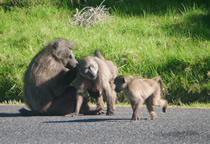
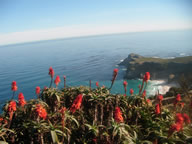
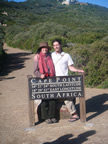
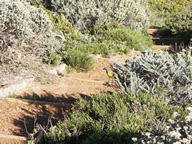
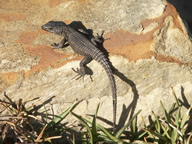
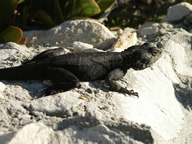
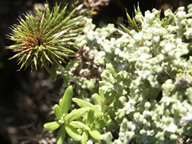
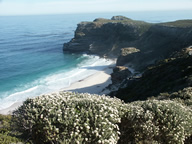
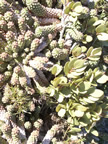
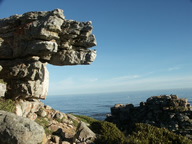
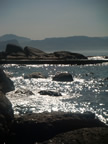
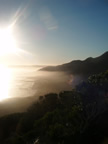
|
||||
| Crystal Pools | ||||
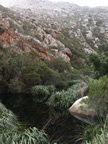
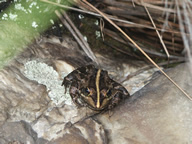
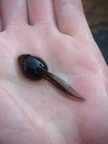
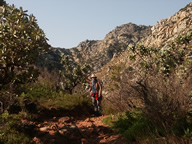
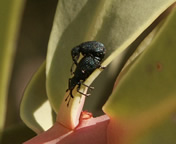
|
||||
| World Cup, continued | ||||
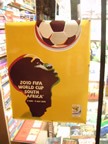
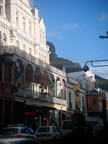
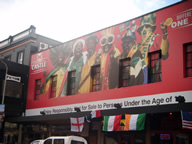
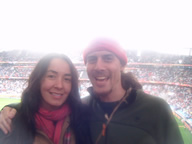
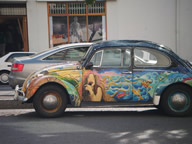
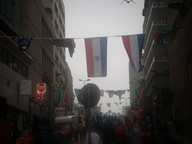
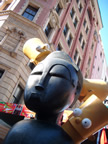

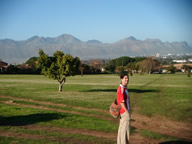
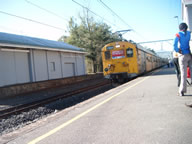
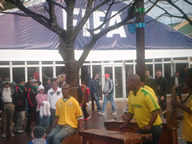
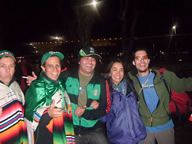
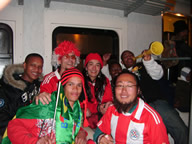
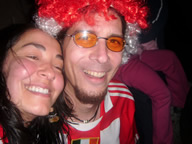
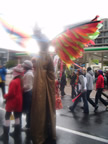
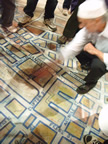
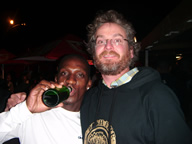
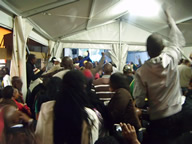
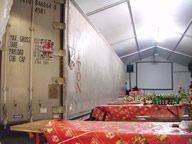
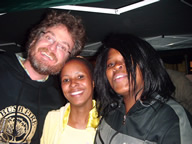
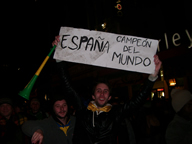
|
||||
| Otter Trail | ||||
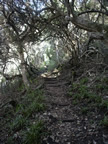
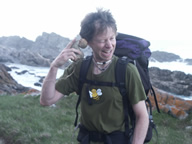
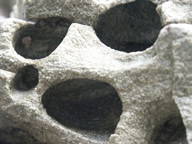
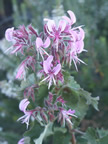
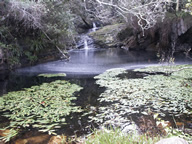
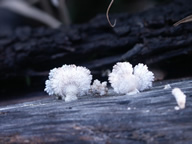
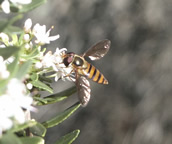

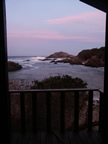
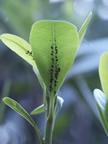
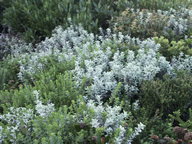
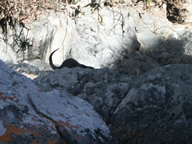
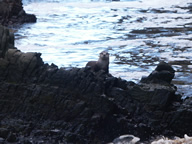
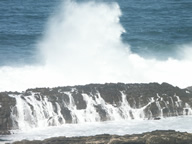
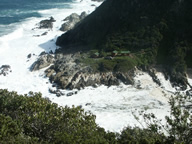
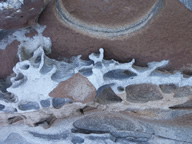
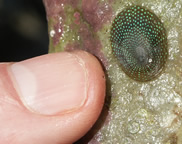
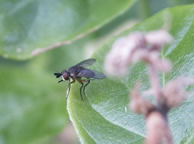
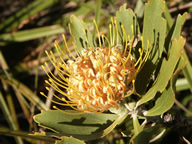
|
||||
|
After 5 days on that stunning trail, we had supplanted our month long suburban Cape Town lifestyle with backpacks, hiking boots and water treatment pills. In other words, we were ready for Madagascar! Sadly, Worm was going to be unable to join us on our trip to the Enchanted Island, but the rest of us persevered; we headed back to Joburg and prepared to be transported to another planet. |
||||
| Madagascar...en fin! (posted August 9, 2010) | ||||
|
Wawa1 "Mimpodiana" by Wawa |
||||
|
I'm chewing some Kat leaves right now, and I'll try to comment on any noticeable effects that are not obvious from the report below. Greetings from Diego Suarez, known as such due to a brief Spanish colonization period of this strategic port town in the North of Madagascar, before returning to French hands. Speaking of the French, I have not met a single Malagasy who was not ecstatic about the first round World cup exit of their colonizers. In fact, the general opinion on French people is, well, not very positive. This is in some contrast to Moçambique, where the view on the Portugese is definitely more mixed. One effect of the rather, shall we say, blasé opinion of the French is that, while French is fairly widely spoken in the larger towns, any attempt to speak even a little Malagasy is met with wide, generous smiles. This generosity is definitely the most lasting impression I have of this land so far. The people we have met -with the sole exception of one asshole minivan (henceforth "Taxi-Brousse") driver- have been unbelievably inviting, relaxed, giving and open people.
So I say that the most lasting impression is the people. But, to be honest, part of this is because while an equally powerful set of impressions is the environment here, that is a painfully complex topic. For example, while we were staring into the eyes of a beautiful female golden bamboo lemur, we couldn't help but think that, since there is so precious little habitat left for these majestic creatures, we may be looking on a species that will exist no more by the end of our lifetimes. More on our amazing wild encounters here and related thoughts in a future post! |
||||
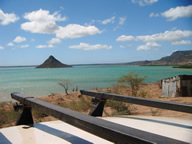
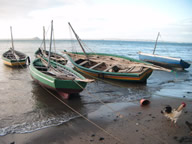
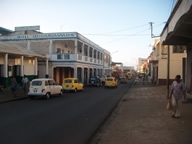
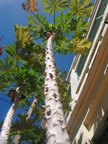
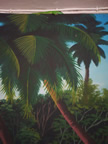
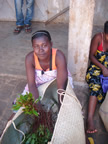
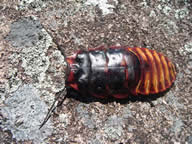
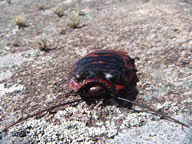
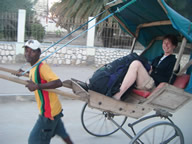
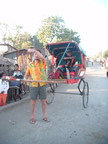
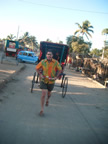
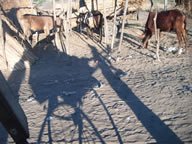

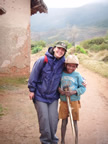
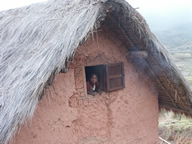
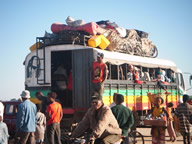
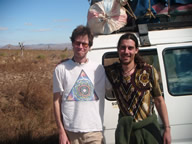
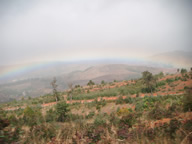
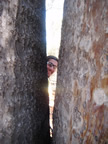
|
||||
| "Le Crise Politique" (posted September 11, 2010...updated November 9, 2011) | ||||
|
Oladad1 "Mahatsiahiva" by Oladad |
||||
Although I knew that Madagascar was an island of multiple habitats and varied landscape, I was still pretty surprised at how much so. And this holds not only for the geography -which ranges from high mountain-fringed plateau running down the center of the island, seasonal rain forest in a band along the east, spiny desert in the south, amazing islands and beaches all around, and high rainfall tropical forest in the north. Mirroring these varied habitats are equally varied tribal cultures, each of which has unique customs, taboos, dialects and apparent ethnicity. Recent DNA evidence suggests that all humans in Madagascar arrived within the last 2500 years, with major contributions from Indonesia-Malaysia and E and NE Africa, and more recently from India and persons of Arabic descent. The result, as you might guess (and as I think is readily apparent from many of the pictures below) is a strikingly beautiful people. Viva la mistura! The most dominant ethnicity historically and currently is the highland Merina people from in and around the capitol, Antananarivo (henceforth "Tana"). Beginning in the late 18th Century, with aid (including, crucially, guns) from the British, the Merina unified the country under a single monarchy. The reverberations of this bloody unification campaign are still palpable in local stories and taboos (henceforth, "fady"), a few of which I will describe anon. After about of century of Merina rule, the French actively colonized Madagascar for about 50 years until ceding full independence in 1960. The years since then have been characterized by democratic republics headed by -to varying degrees- dictatorial presidential regimes dominated by Merina. The most recently elected president, Ravalomanana, a dairy business magnate who is not Merina, enjoyed broad support from the poorer sectors of Malagasy society and outside the capitol city. He made good on several campaign promises, such as building roads, hospitals and schools and preserving quite a bit of (desperately need) additional national park land. But his government was far from an improvement over the deeply entrenched corruption problems that have plagued all Malagasy governments since independence. Several other decisions that were probably made to secure his power base (such as subdividing the country's 6 political provinces into 22 sub-domains in 2004) were characterized by his opponents as dictatorial in nature. In 2009, this impression of Ravalomanana as becoming increasingly dictatorial led to street protests organized by Andry, the Mayor of Tana (and previously popular television personality). Andry had the backing of several key elements in the military, and his calls for Ravalomanana to step down were bringing thousands into the streets, and on some days, brought the city to a standstill. On February 7, 2009, National Police troops fired on a Andry-led protest march, killing 32. This event, as well as Ravalomanana's slow-coming and tepid apology in response, may have turned public sentiment against him enough to embolden Andry to seize power in what pretty much everyone but Andry and his ardent supporters say was a Coup d'Etat on March 16, 2009. The Supreme Court validated Andry as the head of a transitional government, and the current situation, then, is described as "Le Crise Politique." Most foreign governments have refused to recognize the legitimacy of Andry's seizure of power. Andry, who is 35, is too young to stand for Presidential election under the current constitution, but a referendum slated for this November may change the constitution to allow him to do just that (though Andry continues to maintain that he has no desire to run for office). Presidential elections are planned for May 2011. [Note added December 3, 2010: This referendum was just completed, and you may have heard that it was accompanied by another attempted (but failed) coup, this time against Andry, but by some of the same generals that took out Ravalomanana in the 2009 coup that installed Andry! The referendum was boycotted by most opposition parties, and Andry would not let in foreign observers. The official result was predictable: despite low turnout (the official number was 53%), 75% approved the new constitution, which in addition to lowering the eligibility age for the presidency to 35, also enshrines his current hold on power until the next elections, includes no rules for the next elections, and also has a clause stating that one must have been in the country for 6 months prior to the election to run. This latter clause was seemingly designed to keep Ravalomanana (who is currently in exile) from running, and the other clauses to keep Andry in power indefinitely, since it will now be in his interest to keep postponing this election as a means to continue to stay in power. And Madagascar has a long history of postponing elections. Not looking good...] [Note added November 9 2011: Indeed, the elections (both Presidential and Parliamentary) have been postponed this year, twice now -once in May, once in September. The new election date is May 2012. Andry is still in power, but has now agreed to a provision allowing all former presidents (including Ravalomanana) to stand for the Presidential elections. Most assume that if Ravalomanana returns to Madagascar to run, he will be immediately arrested. As far as I know, Andry still has not indicated whether or not he will run, but I bet he will.] [Note added October 13 2013: It has been an eventful two years in Malagasy politics since my last update, above. As usual, the planned elections were delayed several more times. Most notably, the last year plus saw several attempts by Andry, Ravalomanana, Ratsiraka (another former leader) and even Ravalomanana's wife to stand for elections. Mediators came in and barred all of these candidates from running in the elections that are now set for later this month. There are 30-odd candidates, and the optimistic attitude is that this could be a fresh start for Madagascar. The pessimists say that Andry, Ravalomanana and other power players will still run the show from behind the scenes. All agree that there will almost certainly not be an outright winner in the first round of polling; a second round will take place in December, I believe coinciding with Parliamentary elections. Tensions are high in Madagascar right now with a food crisis developing in the South and a recent bizzarre and gruesome attack on French tourists in Nosy Be, tourism central in Madagascar. Fingers crossed for a peaceful election and transfer of power!] One unfortunate side-effect of the Crise Politique is that illegal rosewood logging (a highly endangered, endemic, slow-growing, primary rain forest tree) has resumed at shockingly high levels, something that we saw first hand in Montagne d'Ambre National Park in the north. There are (to be mild) mixed signals coming from Tana on rosewood logging, along with little capacity for monitoring and enforcement, which has emboldened poachers to increase their rate of extraction. As if the current rate of critical habitat loss weren't worry enough, these latest impacts -inside what little preserved land that there is in Madagascar- are deeply troubling. In the meantime, if you want to do something to help with the problem, my suggestion is to offer monetary and/or volunteer support to the World Wildlife Federation (WWF), which is doing wonderful work in helping to preserve land in Madagascar (and elsewhere; we saw positive results of their past efforts in Moçambique as well). Crucially, the WWF paradigm is to work closely with local communities so that they will be invested (culturally, individually and monetarily) in the preservation of and eco-tourism surrounding the parkland near where they live. |
||||
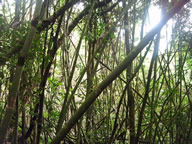
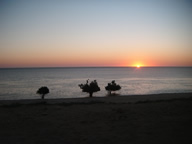
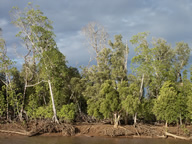
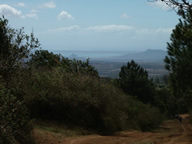
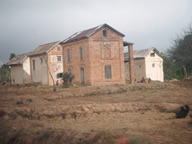
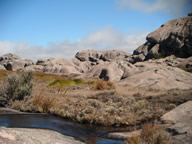
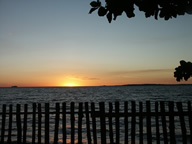
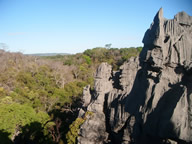
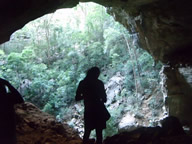
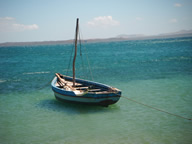
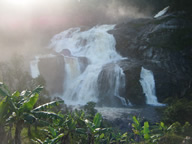
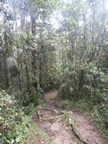
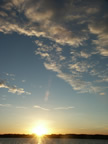
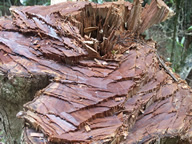
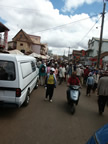
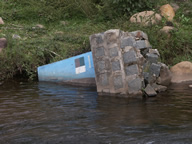
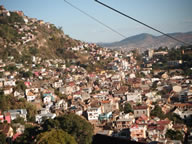
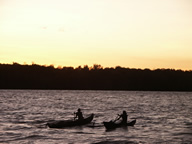
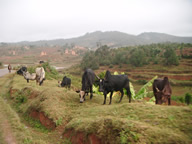
|
||||
| Critter Cornucopea (posted September 11, 2010) | ||||
|
Fandrama1 "Tsy nampoiziko atsika" by Fandrama |
||||
Speaking of the parks, our dominant discovery was not the illegal Rosewood logging, but the staggering array of bizarre and beautiful endemic plants and animals around every corner. What follows is a hodgepodge of some my favorite critter photos that Bee & I took. Eventually, I will try to put captions on all of the photos with species names, location and descriptions. Lemurs were certainly a highlight, and all told we saw over 10 different species of lemurs from most of the major groups. In most cases, the powerful zoom on Jesse's camera got him the best lemur photos (as well as a slew of other excellent shots); his pictures are not included here. He says he will post his photos to picasa sometime around November, so you might email him at that time to ask for access to his picasa site. Also enchanting was the amazing diversity of chameleons and geckos, of which a few shots are below. The plants and bugs were magnificent, of course. And now checked off of my list of "Critters I've Always Wanted to See in the Wild" are terrestrial flatworms (a beautiful cream and blue pin-striped one under a leaf during a night walk in Ranomafana), giant clams (snorkel at the "Petit Passe" near Ramena Beach) and a miniature giraffe-necked weevil in Montagne d'Ambre (woo hoo!). Not spotted by bee & I were Tenrecs or Fossa. Tenrecs are a group of insectivores endemic to Madagascar, which were all in their hibernation season in the parks Bee & I visited. Fossa -remarkably cat-like lemur predators from an endemic, non-feline carnivore group- are a rare sighting, and, alas, we were not lucky in this way. As I type this, Jesse is in the Masoala Peninsula, where tenrecs are purported to be still active this time of year, and Fossa are also found, so he may see some yet! More on the Fossa & Tenrecs in my entry on convergence, below. |
||||
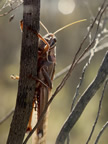
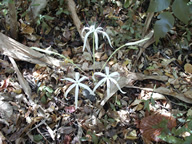
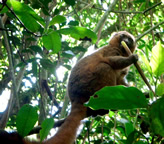
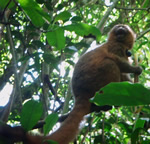
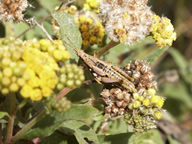
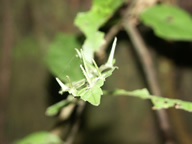
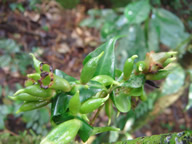
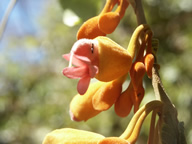
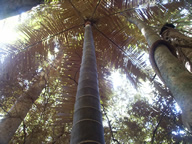
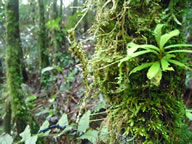
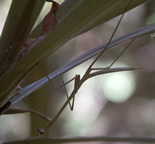
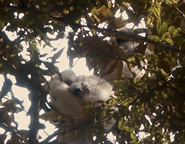
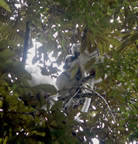
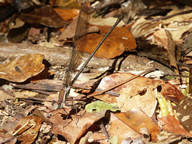
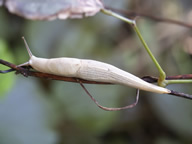
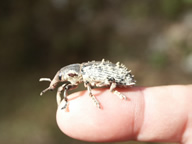
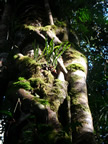
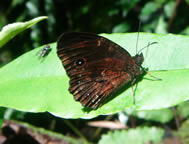
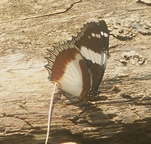
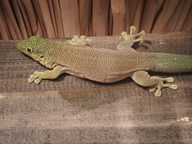
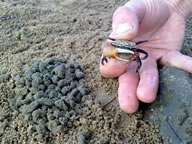
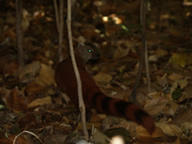
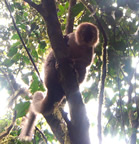
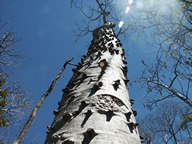
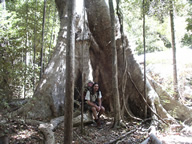
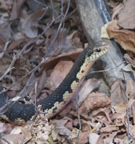
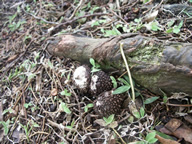
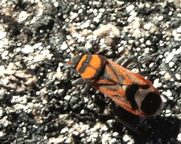
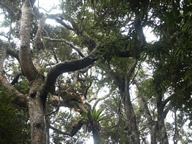
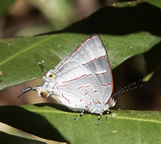
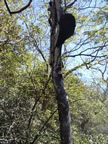
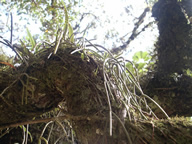
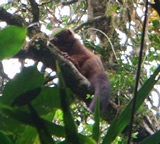

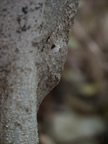
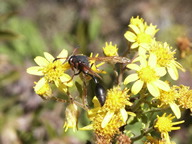
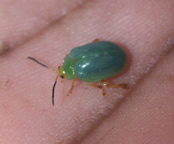
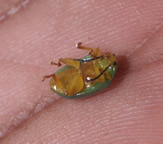
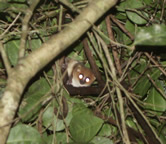
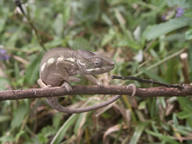
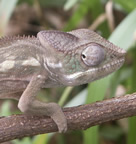
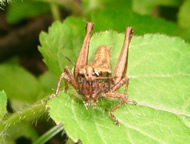
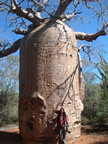
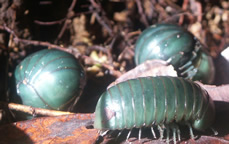
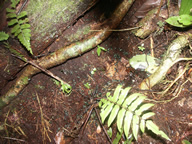
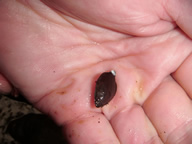
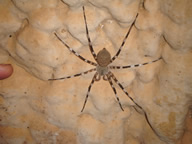
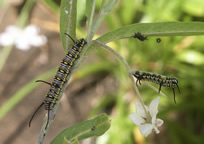
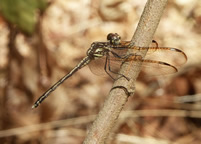
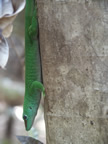
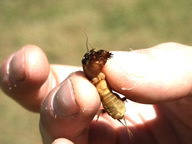
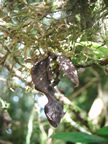
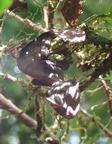
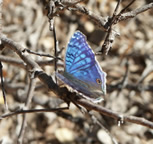
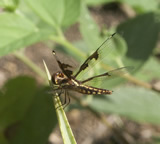
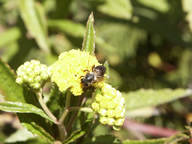
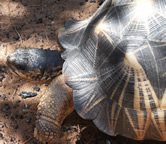
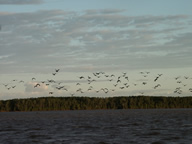
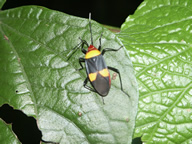
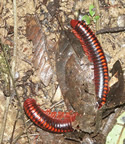
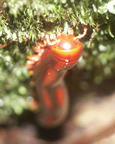
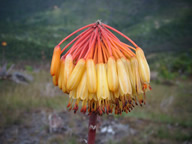
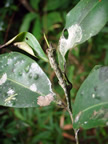
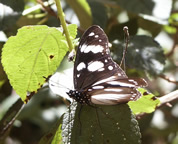
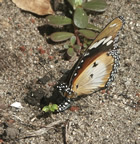
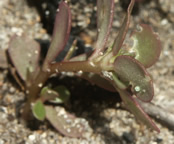
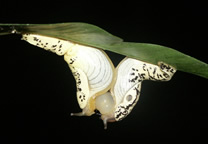
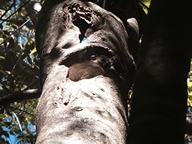
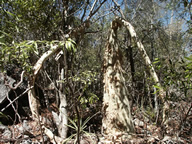
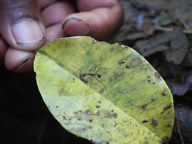
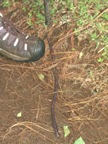
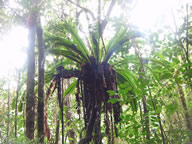
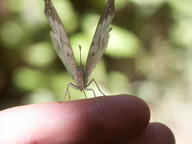
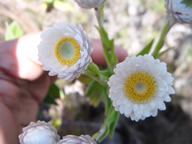
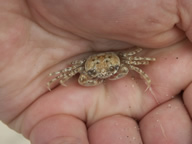
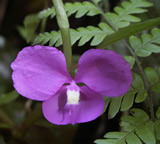
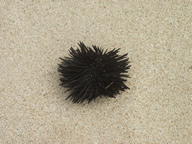
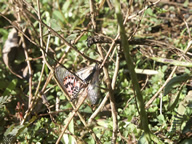
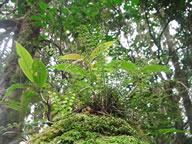
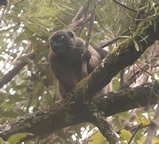
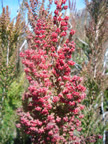
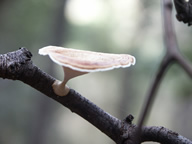

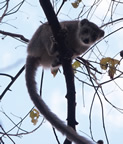
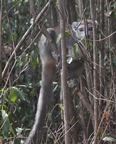
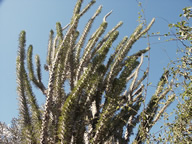
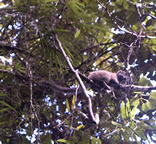
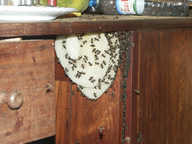
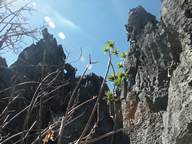
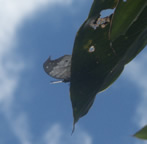
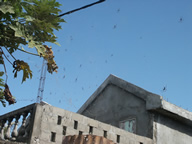
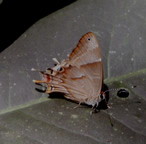
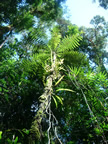
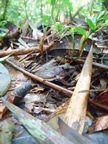
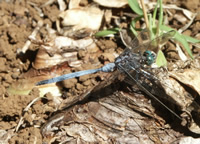
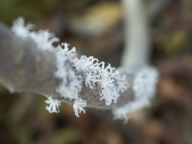
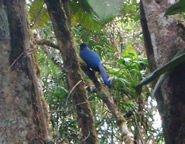
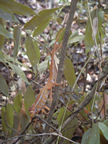
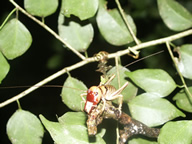
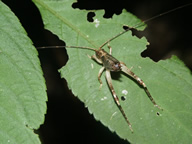
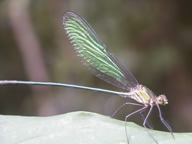
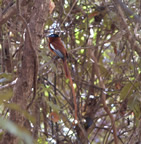
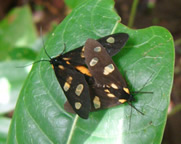
|
||||
| Parallel Economies (posted September 12, 2010) | ||||
|
Oladad2 "Ramaintsokely" by Oladad |
||||
|
I've noticed this in past travels elsewhere, but it finally solidified for me in Madagascar. Tourists come into the country with wealth far beyond the average Malagasy citizen, but the crucial tourist dollars that they spend seem to rarely actually make it into the hands of the people who need it most. Countries like Madagascar have two parallel economies. One is a series of resorts, tourism outfits, travel agencies, airline companies, gift boutiques and restaurants that are overpriced, and either owned by wealthy Malagasy or foreigners. In any case, much of that money is then spent overseas, so fails to "trickle down" in any way. The second is an economy of street sellers, minibus transit, restaurants frequented only by locals, small out of the way villages and simple guest houses. The reason that I call these "parallel economies" is that the parallel restaurants can be a block apart, the tourist 4x4 jeeps run down the same roads as Taxi-Brousse, the tourist hotels are across the road from the local establishments, the villages that are on tourist stops are just up the highway from charming villages that rarely see a tourist. I had a revelation on the way to dropping bee off at the Diego Suarez airport for her return home. The vast majority of travelers take cabs the 9km to the airport from town, and the fare for vasa (foreigners) is often 25,000 Ariary (approx 12 USD) for two. This may not seem much, but when compared to the Taxi-Brousse rate of 500 Ariary (approx 20 cents), it's a substantial difference. I left the airport to walk back to the main road (passing taxi drivers swearing to me that there are no Taxi-Brousses to town) and saw an extremely poor village right across the street from the airport. I thought about the vast array of needs to which that village could attend could they simply get 1,000 Ariary from each of the overpaid cab fares whizzing to and fro past their village every day. What would be possible in Madagascar if only the parallel lines would meet every once in a while? Bee had given me some extra clothes and other items, as well as a backpack she no longer needed, requesting that I give it to someone who needed it. I walked across to the village and gave them to an elder, saying "cadeau" (present). She smiled, thanked me, handed them to her granddaughter, and went back to pounding rice with her mortar. |
||||
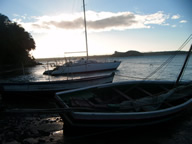
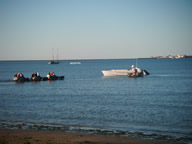
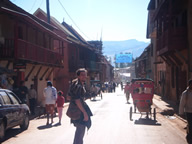
|
||||
| Sakafo (posted September 12, 2010...updated November 29, 2010) | ||||
|
Fandrama2 "Shaimah" by Fandrama |
||||
There are almost no overweight people in Madagascar. Part of this is the fact that they are poor, but part is that they eat good food. Meals are prepared with fresh ingredients and mucho cariño, and this holds true from the fanciest restaurant to the humblest roadside food stall. It is possible to maintain a vegan diet while traveling in Madagascar (our Korean friend Gna did just this), though Bee & I ate some fish and eggs, as the chickens in Madagascar are truly free range -unlike the so-called "free-range" eggs in the states- and you can tell this from the quality of the eggs. The staple food is rice, and rice fields are everywhere in the country. Growing rice is a seriously hard life, as the profit margin is razor thin, and the effort needed to prepare, sow and harvest by hand is immense. To help with the preparation of the fields, the people use zebu (Malagasy cow, a sacred animal which no one quite knows how or when it arrived) attached to tilling carts. But if you are not lucky enough to have your own zebu , the rental price for a pair of zebu to work a third of an hectare (a little less than an acre) is 100,000 Ariary (approx $50), which is quite pricey considering that zebu themselves cost only about 3-4 times that amount. Malagasy people eat so much rice that they don't drink very much water: they get most of their hydration from the water in cooked rice. In addition to a huge bowl of rice (think family-sized rice bowl in a typical Chinese restaurant in North America), a meal ("Sakafo") will include a very small portion of chicken, pig, zebu, fish or seafood, along with a vegetable broth soup made with a common roadside plant called Anomorongo. Other standard meals include a cassava mash and bean-based soups. In the lowlands, in particular, you can get dishes served in some delicious sauces, such as coconut-vanilla. All of the food is organic in Madagascar because they can't afford chemicals. Isn't it odd that their luscious organic tomatoes fetch such a low price in Madagascar that ladies ride buses into the bigger towns at the crack of dawn with a big basket of tomatoes on their head for the hope of selling a few extra? Meanwhile, non-sprayed tomatoes are a boutique product in the West. Weird. On the roadside, you encounter a lot of fried treats. Samosas are common, and almost always filled with zebu, but there are numerous tasty vegetarian snacks, including boiled and then fried cassava ("mandio shyryry" in the original Guaraní mother tongue), deep fried cassava mash, vegetable fritters, fried sweet potato, fritters stuffed with potato, candied shredded coconut treats, and, in the morning, absolutely delicious sweet rice cakes variously called Maro Mahay (literally "many people know it"), Mokary Vary ("rice cakes") or Mofo Gasy ("Malagasy bread/cake"). I am currently trying to recreate this recipe for my niece who doesn't eat gluten. At Taxi-Brousse stops, quick meals are made up of your choice of mostly vegetarian cold salads (pasta, potato, etc.) and hot rice. Eating at those joints will run you about 25 cents for a full meal. Everyplace- I mean EVERYPLACE- that you eat has its own hot sauce, called "sakay." And I don't think I ever tasted two sakay that were exactly the same: hot peppers variously with mint, tamarind, fruits, tomatoes, vinegar, oil, or just crushed peppers. And there is an abundant variety of hot peppers in Madagascar, none of which looked exactly like any I had seen elsewhere. Oh, and by the way, the contests for hottest pepper in the world? Those that either have scotch bonnets or habaneros on top? I will bet good Ariary that these contests invariably exclude all Malagasy pepper varieties. We brought back seeds, so hope to spread the love around. Best roadside food? Two come to mind. On the Vanilla Coast, ladies in one village were serving a beautiful green papaya salad with tomato and cucumber colored with turmeric, served in a banana leaf. An absolutely gourmet salad passed through the window of a Taxi-Brousse, costing 100 Ariary (less than 5 cents). In this same region, when I decided one day to take a one way Taxi-brousse out of town and then just walk from village to village, I came across a family holding up plastic bags to passing cars. I walked over to investigate, and saw a basketful of lantern flies! This common name is a double misnomer, since they are neither flies nor do they glow as originally and erroneously described, but are true bugs (order Hemiptera, family Fulgoridae) in the genus Pyrops. This critter (Pyrops madagascariensis), which has an absolutely enormous snout, and which I excitedly photographed live not 10 days earlier, is called "Sakondro" in Malagasy. They are apparently roasted and sprinkled with spices. Absolutely delicious! The best tasting insect I have tried by far, and way better than my previous top three: Mopane worms (South Africa), cheese maggots (Sardegna) and deep fried Giant Water Bugs (Bangkok). [Don't talk to me about meal worms, which are totally insipid, and those that serve them are apparently only interested in some kind of joke -I don't see the humor- and clearly not at all serious about haut-cuisine]. On my way back out of town a week later, I was scanning the side of the road for that Sakondro-selling family, and there they were! But our Taxi-brousse was going way to fast to stop there. Bummer. About 20 minutes down the road, as we approached another village, I heard a passenger say "Sakondro," and the Taxi-brousse came to a stop. A pack of kids rushed the car, and I handed over 1000 Ariary (less than 50 cents) for two bags, one of which I ate and shared with my fellow passengers, the other I kept and brought through agricultural inspection at JFK no problems ("Yeh, we see cooked bugs all the time- especially from Mexicans. Whatever floats your boat!"). If they weathered the journey intact, Seattleites should get a chance to sample this delicious treat upon my arrival this weekend. My favorite beverage was Kola tea, a mind and body stimulating drink made from Kola nut, a tree in the family Malvaceae native to Africa, and related to Cocoa (Theobroma, native to South America). Kola is famous for having been a key ingredient in Coca-Cola back in the day (though I think they don't use it anymore, and they definitely don't use coca leaves these days; now the key ingredient is high fructose corn syrup), but the straight tea is a whole other experience. Shops that specialize in Kola tea have a bit of the feel of an opium den, and the best recipe we encountered was a combination of Kola (which by itself is strong and quite bitter), Vanilla, Cocoa, Ginger (which has a great Malagasy name: 'Sakay-Tany", literally 'earth spicy pepper') and honey. Tsara be! (delicious!) |
||||
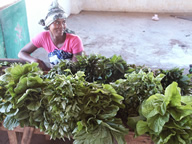
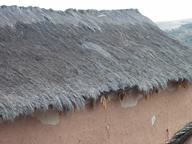
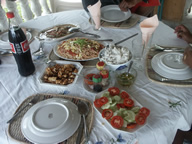
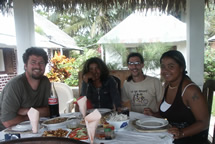
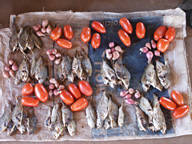
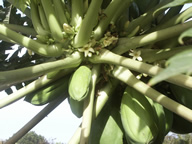
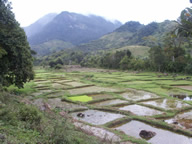
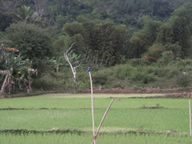
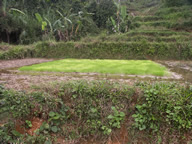
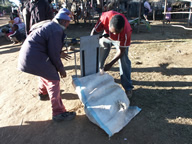
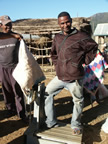
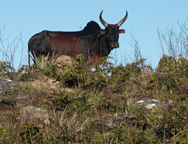
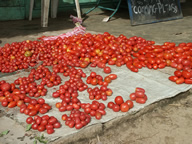
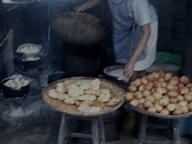
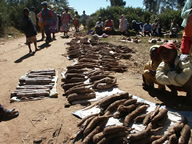
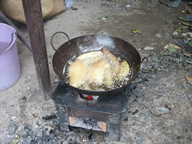
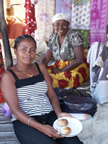
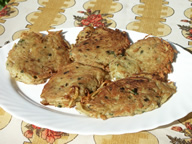
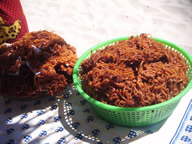
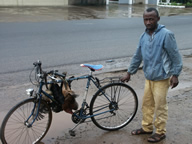
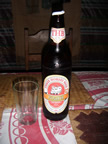
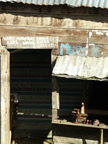
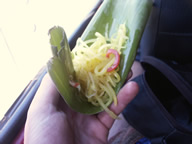
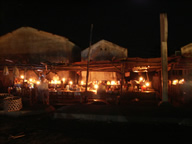
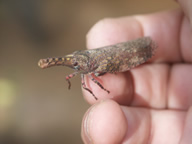
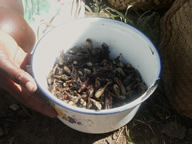
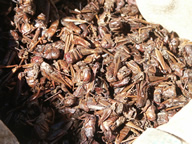
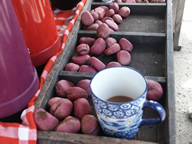
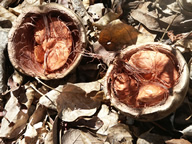
|
||||
| Musique (Javamaneno) (posted September 13, 2010..updated Nov 21, 2010) | ||||
|
Lyli song "Ino Koa Malaza" by Lyli |
||||
As I mentioned before, music was what first got the idea of visiting Madagascar spinning around my head, and this seems appropriate, since music is inextricably embedded in the lives of the Malagasy people. Taxi-Brousses almost always have tunes kickin throughout the trip, and I would often hear a song that I wanted to know more about. So I'd turn to the passenger next to me and ask who the musician was. They knew the answer a good 95% of the time, and this was seemingly irrespective of the age of the passenger, from teenager to octogenarian. The music ranges from super high energy, rhythmically complex dance music powered by a drum-bass-accordian rhythm section to sweet folk songs sung in three part harmonies with guitar accompaniment. Older kids teach the younger kids the chords and the words. Bands tour incessantly, and play to either packed soccer stadiums (approximately $1-1.50 entry) or sweaty dance halls ($2-5 entry). The stadium shows are a trip, with a stage in the middle and scores of bars/barracas on the periphery. On stage with the band invariably were impeccably accomplished ass shakers (both male and female) of a level difficult to put into words. As far as I can tell, there is not a single, standard record store (i.e. selling new CDs) in the entire country. Instead, there are numerous roadside stands where you can have the CD of your choice burned (CD or MP3 format) for a small fee. This is how I came to possess the songs which I will eventually post here, based on music I heard throughout the trip. I can't think about Madagascar without also conjuring up an accompanying soundtrack of incredible music. Even the mosque playing the prayer tunes over the town of Diego Suarez one Ramadan morning followed up with some Malagasy dance music. That's my recipe for world harmony. |
||||
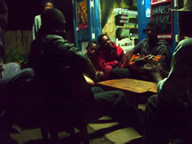
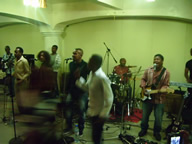

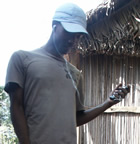
|
||||
| Kids (posted November 23, 2010) | ||||
|
Wawa2 "Soma Donia" by Wawa |
||||
|
Hey Western parents, listen up! Picture this: a mini van transport (Taxi-brousse) heading 4 or 8 or 14 hours down the road, designed for 15 passengers but containing more than 25. What's the secret to this clown car? The judicious distribution of children and infants. In practice this means a mother handing their child to a perfect stranger to hold on their lap for the trip. How long would your kids last in this scenario before emitting screeches of protest? 30 seconds? Well, this is a daily occurrence in Madagascar, and the only time I remember hearing a single complaint from a child in a Taxi-brousse was one obviously very sick child on her way to a clinic. Now, this is not to say that the children are only seen and not heard. In other contexts, Malagasy children are just like children elsewhere: playing with abandon, gregarious, talkative, filled with curiosity. Oh, and kids stay up late, don't have pre-determined nap time in the afternoon, are happy eating what is served to them (cucumbers don't have to be peeled a certain way), and, by and large, seem pretty well adjusted. How is this possible? What are the Malagasy parents doing that you're not? You tell me! :) |
||||
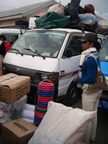
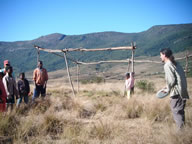
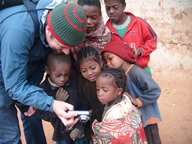
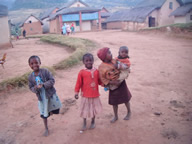
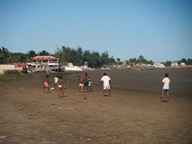
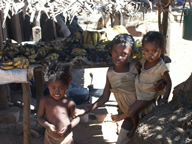
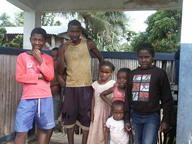
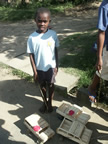
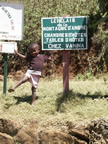
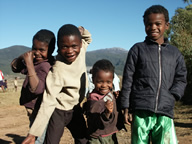
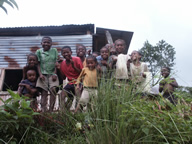
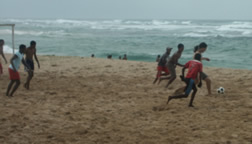
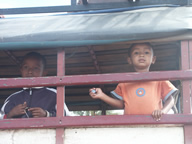
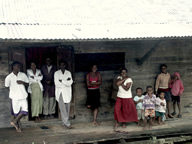
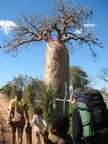
|
||||
| Convergence (posted November 23, 2010) | ||||
|
Oladad3 "Salamanga" by Oladad |
||||
|
One striking aspect of the flora and fauna in Madagascar is in the amount of evolutionary convergence: independent evolutionary acquisition of morphological or other features. Famous examples include the wing of the bird and the bat (and the bug and the pterosaur and…), and the general principle was an important one discussed as least as far back as Darwin's "Origin". But in Madagascar, convergence seemed to be around every corner, and at a level that blows the mind. It also seemed to be manifest in two distinct ways: 1) endemic organisms that are incredibly alike unrelated mainland counterparts; and 2) multiple unrelated species within Madagascar that have a similarly unique morphology. Examples of the former include the fossa (an remarkably cat-like predator, in behavior and morphology, but from a totally distinct mammal group), the various tenrecs (again, an endemic family whose different species have come to closely resemble their distant cousins: hedgehogs, moles and otters) and the vontisra (an incredibly mongoose-like non-mongoose; pictured below). The standout in the second class is the amazing diversity of Malagasy trees (from widely disparate plant families) that resemble the bizarre baobab (see below). The best partial explanation for the above has to do with the geography and evolutionary history of the island: it's quite far from the mainland, so immigration is probably a rare event. Thus, new arrivals (like the hypothesized tenrec ancestor) have multiple niches to evolve into, and hence adopt this wide range of unique morphologies. OK, fine. But a convergent cat-like critter that actually purrs? Like many things in Madagascar, the awesomeness defies easy explanation. |
||||
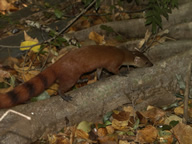
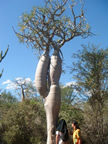
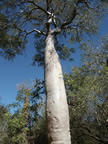
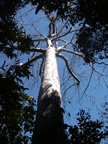
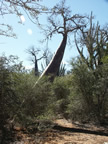
|
||||
| Vanille (posted November 23, 2010) | ||||
|
Rajery "Misahotaka Ny Akama" by Rajery |
||||
|
Vanilla is the number one export of Madagascar, and the wild thing about this orchid relative is not only that it is not native to the island (it's from Mexico), but that there is no Malagasy insect that will pollinate it! Thus, vanilla farmers have to pollinate each flower by hand. The difficulties in producing the plant don't end there: the plants need to grow several years before first harvest, the beans need to be harvested at just the right time (once a year), then for preparation they need to be boiled for just the right amount of time, and constantly selected for varying quality while they are laid out in the sun to dry. But it turns out that this critical drying season in the "Vanilla Coast" is characterized by flash rain showers. If it takes too long to dry, then the potentially lucrative beans will get moldy, so the workers place the beans out on tarps and carefully watch for storm clouds. At the first hint of rain, workers will run out into the field and quickly fold up and bring the tarps under cover to wait out the shower, and then bring 'em back out into the sun. It turns out that most of the best quality beans get shipped to Europe and fetch a pretty penny; the less high quality ones go mainly to the USA, where the majestic beauty of the pod is going to be crushed into a monotonous extract. While this all seems like it would make a good living for Malagasy farmers in that region, it's not quite so simple: vanilla prices have fluctuated so wildly on the world market that most farmers can't afford to focus exclusively on Vanilla crop. But I did see some villages that had obviously made vanilla production a bit of a communal enterprise, thus potentially buffering them from the vagaries of an export luxury crop. And those villages smelled freaking amazing. |
||||
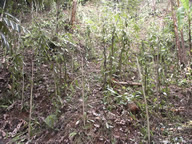
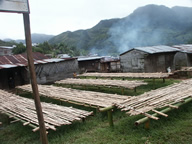
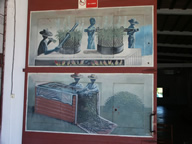
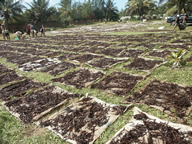
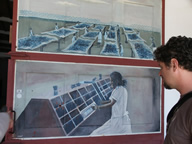
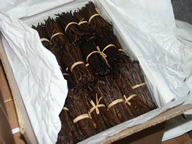
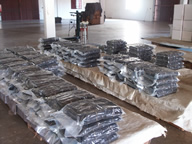
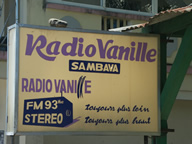
|
||||
| What is Africa? (symmetry) (posted November 23, 2010) | ||||
|
Fela "Cross Examination" by Fela Kuti |
||||
|
There's a lot more to tell, but I don't want to make it so i have nothing to say about Madagascar or southern Africa to each of you in person! So I'll just end with some random thoughts on Africa. the concept of 'Africa' is a bit of a fetish for many travelers. People would say "South Africa isn't really Africa"...or..."you have to get outside the cities to see the real Africa"...or..."Ah, Moçambique! Well, that's really Africa"...or whatever. I've come to feel that these kinds of statements are more about them then they are about Africa; more about some image of a woman pounding cassava with a giant mortar and pestle, grass skirts, adobe huts, elephants. Nevertheless, there certainly is a palpable concept of Africa among Africans. Malagasy peoples, separated by hundreds of miles from the mainland, still fully identified with Africa, as was very obvious in the world cup. Also, I think there is something about visiting the continent where our genus originated that may activate some deep evolutionary identification: when we were wandering around in the grasslands of NE South Africa, it felt as though spotting critters in my peripheral vision was exactly what my eyesight was evolved to do. I think there's also an understandable sense of regret in the Western world about how we have abused and exploited Africa over the generations. Nevertheless, I must say that I felt the strongest sense of hope when, for example, I was talking with the youngsters riding the local train to Cape Town, embracing both their African heritage and their Afrikaans language, screaming at the top of their lungs for a Ghana win over Uruguay - both out of pride and out of some vague sense that a Ghana win would signify that Africa had arrived! Arrived where? In a land of true symmetry, where symmetry doesn't mean sameness. Peace y'all, |
||||
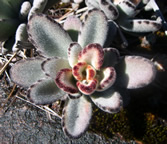
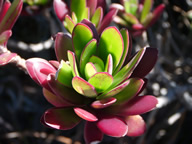
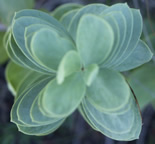
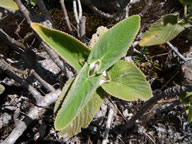
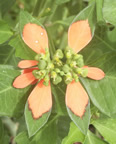
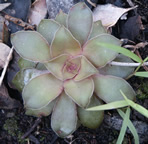
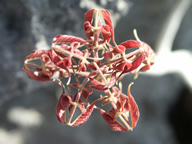
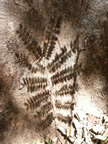
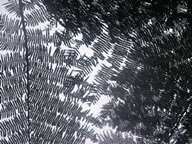
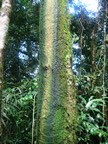
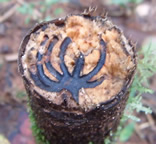
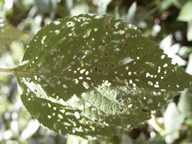
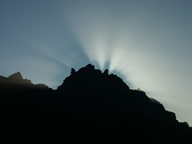
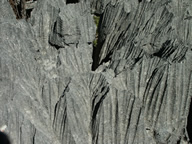
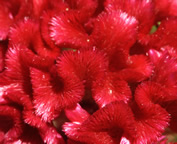
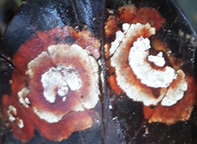
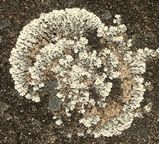
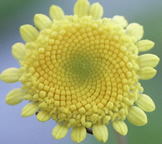
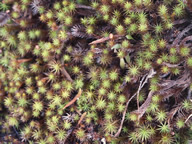
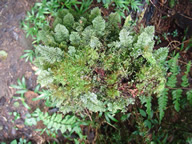
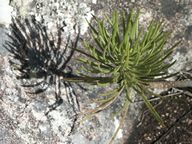
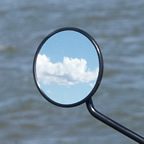
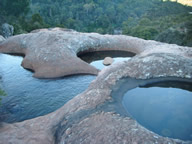
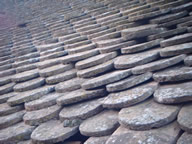
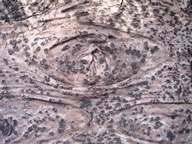
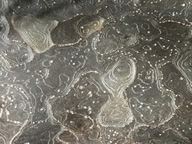
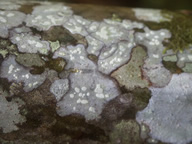
|
||||
The "click-to-expand" functionality on the site is from the open source, javascript, shareware project "Highslide JS", developed by Torstein Hønsi.
The mini MP3 players on the site are from the open source, javascript, shareware project "WordPress Audio Player", developed by Martin Laine.
The drop-down menu functionality on the site is from the open source, javascript, shareware project "jQuery", developed by SpiceBrains.